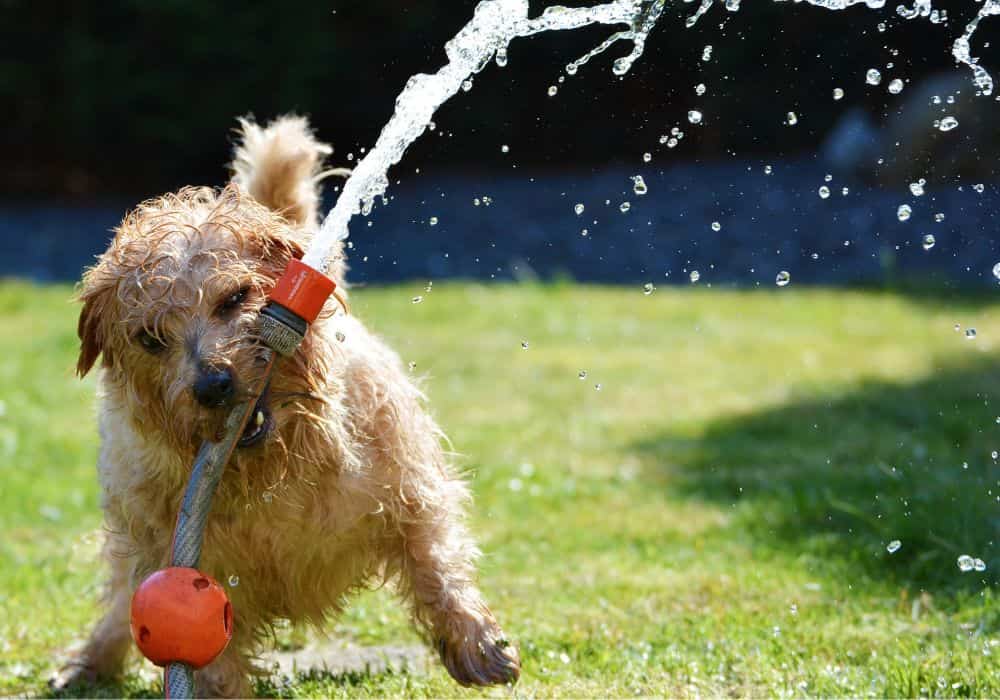Crate training can be a valuable tool for both puppies and older dogs, offering a safe space for relaxation, promoting good housetraining habits, and preventing unwanted chewing or barking.
But navigating the process can feel daunting, especially if you’re unsure whether it applies to your older canine companion. Worry not, fellow dog lovers!
This post will guide you through crate training for both puppies and adult dogs, ensuring a smooth and positive experience for all.
Crate Training: A Guide for Pups and Grown-Ups Alike
Ok, let’s learn more about how to go about crate training our dogs using best, established practices.
For the Tiny Terrors (Puppies):
- Start young: The ideal age range for crate training puppies is between 8 and 16 weeks. The younger they start, the easier it becomes.
- Make it a happy place: Line the crate with comfy bedding, offer favorite toys, and toss in treats to create positive associations. Feed meals inside the crate to further solidify its appeal.
- Gradually increase crate time: Begin with short periods while you’re nearby, gradually increasing duration and distance as your pup adjusts. Never use the crate as punishment.
- Respect potty breaks: Puppies have limited bladder control. Take them outside frequently, especially after meals, naps, and playtime, to avoid accidents in the crate.
- Patience is key: Whining and barking are expected, but avoid giving in immediately. Wait for quiet moments to praise and release, teaching them that calmness gets rewarded.
For the Distinguished Seniors (Older Dogs):
- Go slow and gentle: Older dogs may have negative past experiences, so patience and understanding are key. Introduce the crate gradually, using positive reinforcement like treats and praise.
- Address medical concerns: Rule out any underlying medical issues that might cause discomfort or anxiety in the crate, like bladder problems or joint pain.
- Start with short, positive sessions: Don’t force long crate stays initially. Use the crate for feeding, offering calming chews, or during quiet times. Gradually increase duration as your dog becomes comfortable.
- Respect their limitations: Older dogs may not have the same bladder control as young pups. Adjust crate times accordingly and provide ample potty breaks.
- Don’t expect overnight success: Be patient and understanding. Older dogs may take longer to adapt, but consistency and positive reinforcement will prevail.
Pro Tips for All Dogs:
- Location matters: Place the crate in a quiet area with regular family activity, not isolated or hidden away.
- Cover for comfort: Consider a crate cover to create a den-like atmosphere and reduce visual stimuli.
- Exercise is key: A tired dog is a happy (and calm) dog. Ensure your pup gets plenty of exercise before crate time to release energy and promote relaxation.
- Seek professional help: If you encounter challenges, don’t hesitate to consult a qualified dog trainer or behaviorist for personalized guidance.
Things to Consider When Crate Training Your Dog
While crate training can be a valuable tool for some dogs, it’s important to acknowledge that it’s not necessary for all dogs, and there are potential downsides to consider. Here’s a balanced perspective on the reasons why people might crate their dogs, along with some concerns:
Potential Benefits:
- Housetraining: Crates can be helpful for housetraining puppies who have limited bladder control. The natural aversion to eliminating where they sleep encourages holding it until they are taken outside.
- Safety and Security: Crates can provide a safe and secure space for dogs when owners are away or unable to supervise them directly. This can be especially helpful for preventing destructive chewing, escape attempts, or accidents when puppies are teething.
- Travel and Transportation: Crates are often required for safe and legal transportation of dogs by car, plane, or train.
- Den-like Feeling: Some dogs naturally seek den-like spaces for relaxation and security, and a crate can fulfill this need.

Potential Concerns:
- Overuse: Excessive crate confinement can deprive dogs of mental stimulation, exercise, and social interaction, leading to boredom, anxiety, and even physical health problems.
- Negative Associations: If used as punishment or for extended periods, crates can become associated with negative feelings, leading to stress and reluctance to enter the crate.
- Not a Substitute for Training: Crates should not be used as a crutch for neglecting proper training and supervision. Addressing unwanted behaviors through positive reinforcement training is crucial.
- Not Suitable for All Dogs: Some dogs, especially those with anxiety or claustrophobia, may not adjust well to crate training and could suffer negative consequences.
Alternatives to Crating:
- Gated areas: Confining dogs to a safe room or gated area can offer similar benefits to crates while allowing more space for movement.
- Training and supervision: Investing in proper training and providing adequate supervision can reduce the need for confinement and promote good behavior through positive reinforcement.
- Playpens: For puppies, using spacious playpens with toys and activities can provide a safe and stimulating environment during short periods.
Ultimately, the decision of whether or not to crate your dog is a personal one. Carefully consider your dog’s individual needs, temperament, and lifestyle before making a decision. Always prioritize using the crate responsibly and humanely, focusing on positive reinforcement and ensuring adequate exercise and attention for your furry friend.
Canine Comforts: Finding Peace of Mind While You Travel or You’re Away with a Dog Sitter
If crate training is not working for your dog or you notice that they are simply too wound up and anxious by the time you get back to let them out, consider the following alternative: rewarding them by augmenting or substituting a human friend to help assuage their doggy despair: their very own dog sitter.
Why Choose a Local Dog Sitter?
According to Dog Sit Walk, kennels have their place, but for many dogs, the stress of a new environment can outweigh the benefits. Dog sitting offers a personalized, in-home alternative, allowing your dog to maintain their familiar routine and receive one-on-one attention. Whether you’re away for a weekend getaway or an extended vacation, a qualified dog sitter can provide:
- Peace of mind: Knowing your dog is in safe hands allows you to relax and enjoy your trip without constant worry.
- Personalized care: A dog sitter tailors their services to your dog’s unique needs, ensuring they receive proper feeding, exercise, playtime, and cuddles.
- Stress-free experience: In-home care minimizes disruptions to your dog’s routine, reducing stress and anxiety associated with unfamiliar environments.
- Additional services: Many dog sitters offer extras like administering medication, walking multiple dogs, or sending you daily updates with photos and videos.
Choosing the Right Dog Sitter:
Finding the perfect dog sitter is like finding the perfect babysitter: trust and compatibility are key.
Here are some things to consider:
- Experience and qualifications: Look for a sitter with experience caring for dogs, preferably with knowledge of dog behavior and training.
- References and reviews: Contact past clients and read online reviews to get a sense of the sitter’s reliability and approach.
- Meet and greet: Schedule a meet-and-greet with the sitter and your dog to ensure they mesh well and your dog feels comfortable.
- Insurance and bonding: Choose a sitter with liability insurance and bonding for added peace of mind.
By using these tips, you can either crate your dog more effectively or find a suitable alternative to keep your dog healthy, happy, and wholesome all the wonderful days of their life.
- I Asked Google AI to Confirm SEO Best Practices for Single Location Business with Multiple Service Areas - June 2, 2024
- Why Roofers Knock: A Homeowner’s Guide to Protecting Your Home from Storm Damage and Bad Business - May 14, 2024
- Ditch the Expensive Daily Starbucks Coffee with Clio and Save - April 20, 2024



